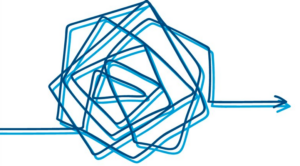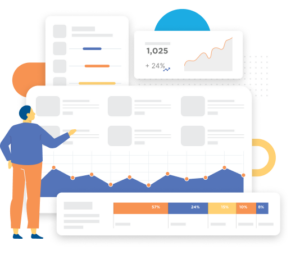Challenge: Inconsistent, Muddied Procurement and Accounts Payable
The complexities of healthcare procurement call for solutions from trusted experts in software automation, especially when moving from cumbersome, manual systems in inventory and procurement to time- and cost-saving technological streamlining solutions. For NeuroPsychiatric Hospitals, paper-based procurement and inventory management were creating all-too-familiar pain points:
-
- Inconsistent workflows and procurement processes across multiple facilities.
- A lack of accountability and trackable data.
- Unnecessary spending and lost savings through consistency in ordering through contracted vendors.

Neuropsychiatric Hospitals is a valued customer that trusts Procurement Partners with all elements of its procurement processes. It’s among the healthcare organizations that enjoy up to 40 percent time savings and 95 percent contract compliance through Procurement Partners’ easy-to-use portal and automated procure-to-pay solutions, saving money through complete visibility and control over spend, saving valuable staff time, and combining human experts with the expert software to maximize results.
The South Bend, Indiana-based NeuroPsychiatric Hospitals (NPH) is a behavioral medical healthcare system that utilizes an integrated healthcare model at each of its hospitals. Its innovative and comprehensive approach offers a range of services through interdisciplinary teams of physicians, clinicians, and nurses to develop individualized treatment plans for each patient. NPH currently operates eight hospitals in Indiana, Texas, and Arizona, with a Michigan facility soon to open.
Corporate Project Manager Erin Rempala has extensive experience in healthcare administration, and her current role at NPH includes a portfolio of responsibilities including oversight leadership of procurement, vendor relationships, and contracting. She’s been with NPH for five years, and when she started, the procure-to-pay process was a considerable challenge.
“We had facility-level ownership of ordering,” Erin recalls. “But it was only as good as the facility and staff they had at that location. In some facilities that maintained and retained staff, it wasn’t as big of a pain point. But for those facilities with more turnover, or just weren’t as good at it, it was very much a pain point.”
This is a familiar story in healthcare procurement: inconsistent processes that lead to muddied comprehension of the big picture and wasted spend and staff time.
“We had no way to monitor inventory, other than paper and anecdotal feelings,” Erin adds. “And we had issues with payments, with making sure we were paying for things that we actually received, making sure we were paying on time, and the organization of our invoices.”
Solution: Procure-to-Pay Automation to Centralize Spend and Manage Inventory
In June of 2022, NPH implemented Procurement Partners’ Hybrent automaton solution to manage its procure-to-pay workflows, processes, and management. Erin reports that the implementation process was smooth, and benefits became apparent right away.
“One thing that we’ve seen that is far and away better between now and this time last year has been our use of contracted items and contracted vendors,” Erin says. “If somebody wants to make a purchase, they’re not just going out and buying it at retail costs. Now they must buy through Hybrent and what’s loaded in there.” 
Procurement Partners’ Hybrent solution centralizes ordering from customer-approved vendors through an easy-to-use, intuitive interface that is available on mobile devices as well as desktop and laptop computers. Not only does this lead to opportunities for major cost savings and procurement and inventory visibility, but it also saves staff time lost through cumbersome manual processes and workflows.
“It gives us time back because everything’s located in one place,” Erin says. “Before, for any one facility, we had maybe 15 vendors. And each of these vendors would have a different process for ordering, a different website or portal. Now they’re all located in one place, and we don’t have to toggle between browsers. This has allowed our teams to get time back.”
P2P automation has also delivered a transparent line of sight in order volumes and costs, robust reporting data, and detailed and accurate inventory to NPH’s operations.
“Hybrent’s reporting capabilities are very helpful to us from an inventory management perspective,” says Erin. “Before we had no oversight into what was being purchased without logging on to numerous individual accounts. Now we have meaningful oversight.”
Results: Cost Savings and Transparency Across the P2P Process
NPH is a solid example of how procure-to-pay automation can deliver the kind of results that ripple through an organization, from procurement officers to financial executives. What were once inefficient, unreliable, and scattered procures and workflows now are marked by strong oversight and cohesion.
Erin points to year-to-year contract utilization within NPH’s relationship with a major food supplier. From April 2022 to April 2023, that utilization has risen from 25% of the organization’s food purchasing to more than 60% today, leading to discounts and efficiencies previously left on the table.
“For us, that’s huge,” Erin says. “We’re a smaller outfit, so this allows us to receive rebates back from the supplier. Just yesterday I got a $3,000 rebate check from that supplier for Quarter One.”
Impacts of the bottom line are being felt across the board. While NPH has shifted some of its procurement budgeting around a changing patient population profile, with an accompanying change in required supplies, Erin points out that in the first year of using Hybrent the organization has seen significant cost savings.
“We’ve seen nearly a $200,000 savings from one year to the next,” Erin says. She also adds that, as of April 2023, NPH’s overall contracted spend has risen to 86%, a figure unthinkable before utilizing Procurement Partners.
With this high level of contract compliance and financial accountability, oversight, and accountability, there are opportunities for Erin to track spend at each hospital and ask questions in real-time. There is also an alignment between procurement and finance that didn’t exist before.
“It’s opened us up to being proactive about our purchasing instead of being reactive,” Erin says. “For instance, sometimes we have patients that require specialized feedings, but you might not have that at your facility because they go bad. With Hybrent, you can see a facility 45 minutes away that has it in hand and ask to have it driven over. It’s stuff you would have thought would be in place in 2022, but it just wasn’t.”
As a procurement professional, Erin is enthusiastic about what Procurement Partners Hybrent automation solution has done for NPH. When asked what kind of message she might have for her peers in the healthcare industry, she’s quick to answer.
“It’s been a big deal to us,” she says. Adding, with a laugh, “It’s made me look like a rock star. I’m not going to lie to you.”
Finally, Erin brings the focus back to NPH’s mission of providing integrated behavioral healthcare, with her organization’s experts supported and empowered by her utilization of Procurement Partners human experts and industry-leading expert software. As a link in the chain of care, NPH’s greater efficiencies and oversight impact both patients and the other organizations NPH interacts with across the continuum of care.
“You’re helping patients, you’re helping other organizations,” she adds. “You’re always trying to do the best by the patient and getting them the care, they need.”
About Procurement Partners
Procurement Partners provides the only healthcare-focused procurement, inventory management, and AP automation platform for administrators and clinical providers across the continuum of care. Procurement Partners procure-to-pay solutions maximize financial health and staff well-being, streamlining and redirecting time toward patient and resident care. Procurement Partners offers the only all-in-one procure-to-pay platforms that provide the freedom to buy from any supplier, through any GPO contracts, with open integration to any financial and other operational systems.